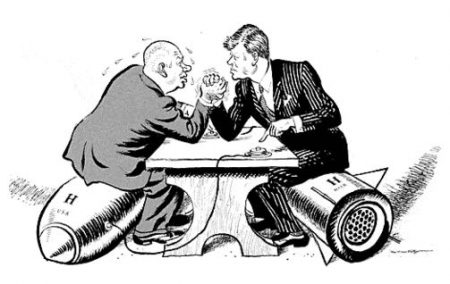More languages
More actions

The Cuban Missile Crisis was a Cold War-era confrontation between the United States and the Soviet Union that lasted between October 16 to 29, 1962. The confrontation is considered the closest the world came to a nuclear war during the Cold War.
Following the unsuccessful Bay of Pigs invasion a year-and-a-half earlier, Fidel Castro asked Nikita Khrushchev to place SA-2 anti-aircraft missiles in Cuba as a precaution against Statesian imperialism. Although this request was initially denied, Khrushchev eventually relented and in May 1962, against the misgivings of Soviet Ambassador to Cuba Alexandr Alexeyev, 162 missiles were set up in Cuba. Statesian President John F. Kennedy was informed of the missiles on October 16 and five days later, ordered a naval blockade on Cuba. The crisis ended on October 29 after the United States agreed to remove 15 Jupiter missiles from Turkey and Italy.
Castro saw the compromise as a betrayal by the Soviets and this prompted him to join the Non-Aligned Movement later that year. Despite this, Cuba continued to receive aid from the Soviet Union until its overthrow in 1991.
